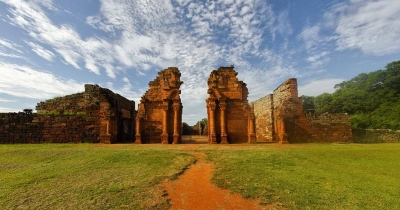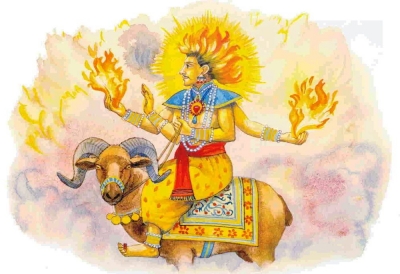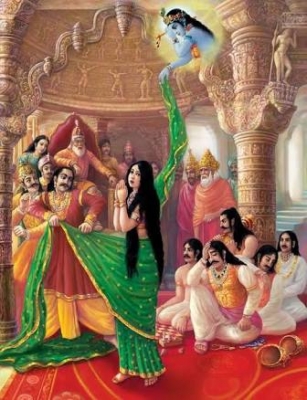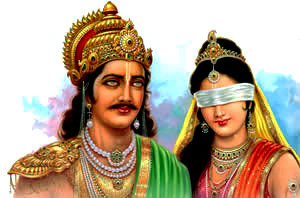What is the history of Jesuit Missions of the Guaranis?

The Jesuit Missions of the Guaranis consist of the ruins of Sao Miguel das Missoes, San Ignacio Mini, Santa Ana, Nuestra Senora de Loreto and Santa Maria la Mayor. Only Sao Miguel is in Brazil, while the others are in Argentina.
Lying at the heart of a tropical rainforest in the land of the Guarani indigenous communities, these Jesuit missions were built in the 17th and 18th centuries. Each of the five-ruins has a specific layout.
These ruins are part of the 30 missions founded by the Jesuit Order in the rainforest stretching across Argentina, Brazil and Paraguay. The missions combine Spanish baroque architecture, and indigenous building technology with the religious symbolism of both local traditions and European Catholic liturgy.
During their time here, the Jesuits brought many changes to the lives of the native population by harnessing their natural resources and transforming their landscape.
This led to the Guaranitica War of 1756 and the later expulsion of the Jesuit order in 1767. Post this, these sanctuaries were abandoned.
Sao Miguel das Missoes
Also known as Sao Miguel Arcanjo, this church was built between 1735 and 1745. Among all the structures, this church is in a better state of conservation. Considered one of the beautiful representations of the Jesuit missions in Brazil and a very important historical record of humanity, visitors can see the ruins in the day, and watch a show in the evening which tells the story of the place in different languages.
San Ignacio Mini
The mission in Argentina was constructed in 1666 in Spanish baroque style, heavily influenced by indigenous motifs. The mission had a central square with buildings clustered around it. After the war, it was abandoned like the other missions and churches. However, its ruins were opened to the public many years later after conservation efforts stabilized the remaining structure. This is the best preserved among the ruins on the Argentine side.
Santa Ana
Not far from San Ignacio Mini, Santa Ana is another mission in ruins. It was founded in 1633 during the Spanish colonial period. It was added to the UNESCO heritage list with the three other missions in Argentina in 1984.
Nuestra Senora de Loreto
This was one of the first missions to be founded by the Jesuits in the early 1600s. located near the San Ignacio Mini mission, the Loreto is not as well-preserved as the San Ignacio Mini or Santa Ana. It is mostly covered in vegetation, but one can still see the ruins.
Santa Maria la Mayor
This mission was founded by the Jesuits in 1626. This mission is the least preserved compared to the others. It had a sizable plaza, printing press and a prison. A church, which is in a total shambles, was also a part of this settlement. The chapel found in the settlement today is a recent 20th century addition.
Picture Credit : Google




